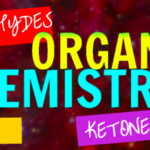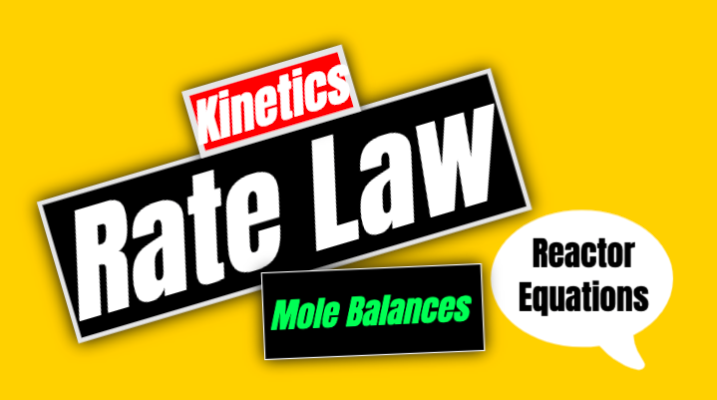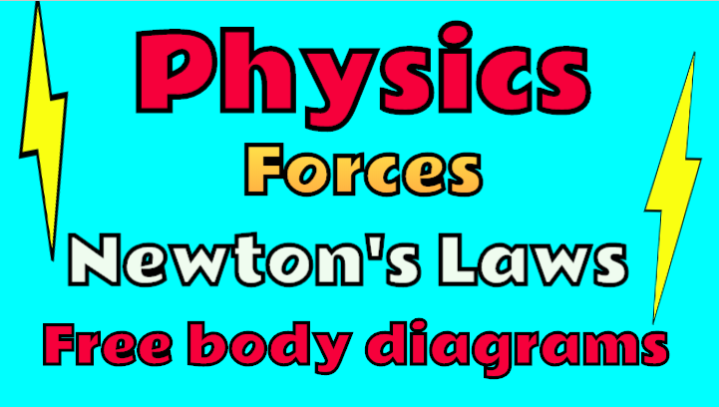Author: neha.bhagirath
-

Introduction to Refrigeration Cycles
Today we are going to discuss refrigeration cycles! VIDEO COMING SOON What is the refrigeration cycle? The term refrigerate means to cool something down (to remove heat from something). By the second law of thermodynamics (which states that total entropy, or disorder, of an isolated system can never decrease over time), heat travels from areas…
-

Further Nomenclature Rules
Now that we’ve covered basic substituents and alkane, alkene, and alkyne families in the previous posts, we will put it all together. Further functional families, such as ethers, carboxylic acids, amides and more, will be discussed in their own blog post. I haven’t introduced them yet to keep it simple, but they will mostly follow…
-

Nomenclature and Properties of Aldehydes, Ketones, and Related Compounds
Today we will be discussing the following topics: 1. Nomenclature of Aldehydes and Dialdehydes 2. Properties of Aldehydes 3. Nomenclature of Ketones, Diketones and Cyclic Ketones 4. Properties of Ketones 5. Nomenclature of Ketenes 6. Properties of Ketenes Nomenclature of Aldehydes Aldehydes are organic compounds that have a carbonyl group (carbon double bonded to oxygen)…
-

IUPAC Nomenclature of Organic Substituents (cyclo, sec-, iso-, tert-, hydroxy, phenyl, etc)
In today’s lesson, we are going to discuss naming different types of substituents on organic compounds, including both their name and drawing. Note that all substituents are highlighted in blue in the pictures below. Sometimes, some of these groups are not substituents, but rather they are the main functional family – it depends what other…
-

Geometric Isomers, Cis/Trans/E/Z Naming of Alkenes
In today’s lesson, we will be discussing the following topics: 1. What are Isomers? What are Geometric Isomers? 2. Using Cis/Trans/E/Z to name Alkenes When we draw organic compounds on paper, it is really only half the story – we haven’t taken into account their 3D structure at all! The direction of bonds within two…
-

Organic Nomenclature: Prefixes and Alkane, Alkene, Alkyne Families
In today’s lesson, we will be learning how to name and draw the following organic families (organic families are organic compounds that are categorized into “families” based on similar characteristics, such as having a carbon to oxygen bond, a double bond, a triple bond, a nitrogen group, or more), discussing homologous series, aliphatic vs aromatic…
-

Intro Chemical Engineering Units, Conversions and Equations
In today’s lesson, we are going to discuss the following topics: 1. Basic Chemical Engineering Units as they relate to the mass and energy balances course, and common equations 2. Unit Conversions and Conversion Factors Common Units and Equations There are many different units we will run across in the chemical engineering, however in this…
-

Rates, Rate Law and Order, Concentration/Flow/Molar Profiles, Mole Balances, Types of Reactors and Design Equations
In today’s post, we will be discussing the following: 1. What is the rate of a chemical reaction, how is it denoted? How do we find the rate law when given a chemical equation, and what is the order of the equation? 2. Concentration, Molar, Flow Profiles 3. How to do mole balances on a…
-

Formal Charge, Nucleophile Electrophile Reactions, Rules for Resonance Structures, Determining most correct structure
This post discusses the following topics: 1. What is Formal Charge and how to calculate it 2. What are Nucleophiles and Electrophiles, how to determine which compounds fall under each category, and how to do NU/E reactions 3. What are Resonance Structures, rules to make them, and how to determine the best resonance structure. Please…
-

Intro to Forces, Newton’s Laws of Motion, Free Body Diagrams, Fundamental Dimensions
In today’s post, we will be discussing forces: What are forces? A force is the action of one body against another. When we apply a force to an object, that object will usually move in the direction we apply that force. (Example: You push a shopping cart with the applied force of your hand. The…
Recent Posts
- More Practice – Thermodynamics
- More Practice – Advanced Functions
- How Genetic Algorithms Evolved From the Theory of Evolution

- More Practice – Process Design
- More Practice – Process Integration
Tags
absorption acid alcohol alphabetical order benzene calculus carbon chemical chemistry computing conjugate cyclo definite differential engineer engineering equations exceptions exponential factoring families Gaussian Elimination graphs identity indefinite limit rules limits logarithmic math MATLAB nomenclature organic phenyl programming properties reversed carnot Row Reductions rules squeeze theorem substituents System of Equations table of values trig university vapor compression
Comments
Hello there. I discovered your site by means of Google at the same time as searching for a similar subject,…
thanks!